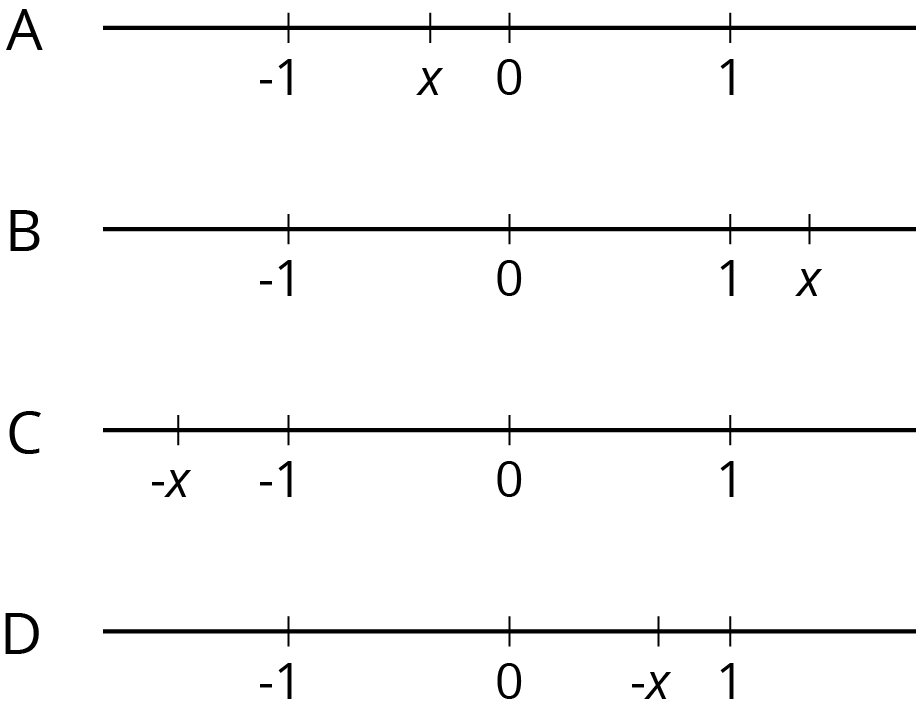Lesson 4
Money and Debts
Let's apply what we know about signed numbers to money.
Problem 1
The table shows five transactions and the resulting account balance in a bank account, except some numbers are missing. Fill in the missing numbers.
| transaction amount | account balance | |
|---|---|---|
| transaction 1 | 200 | 200 |
| transaction 2 | -147 | 53 |
| transaction 3 | 90 | |
| transaction 4 | -229 | |
| transaction 5 | 0 |
Problem 2
-
Clare has $54 in her bank account. A store credits her account with a $10 refund. How much does she now have in the bank?
-
Mai's bank account is overdrawn by $60, which means her balance is -$60. She gets $85 for her birthday and deposits it into her account. How much does she now have in the bank?
-
Tyler is overdrawn at the bank by $180. He gets $70 for his birthday and deposits it. What is his account balance now?
- Andre has $37 in his bank account and writes a check for $87. After the check has been cashed, what will the bank balance show?
Problem 3
Last week, it rained \(g\) inches. This week, the amount of rain decreased by 5%. Which expressions represent the amount of rain that fell this week? Select all that apply.
\(g - 0.05\)
\(g - 0.05g\)
\(0.95g\)
\(0.05g\)
\((1-0.05)g\)
Problem 4
Decide whether or not each equation represents a proportional relationship.
- Volume measured in cups (\(c\)) vs. the same volume measured in ounces (\(z\)): \(c = \frac18 z\)
- Area of a square (\(A\)) vs. the side length of the square (\(s\)): \(A = s^2\)
- Perimeter of an equilateral triangle (\(P\)) vs. the side length of the triangle (\(s\)): \(3s = P\)
- Length (\(L\)) vs. width (\(w\)) for a rectangle whose area is 60 square units: \(L = \frac{60}{w}\)
Problem 5
Add.
- \(5\frac34 + (\text{-}\frac {1}{4})\)
- \(\text {-}\frac {2}{3} + \frac16\)
- \(\text{-}\frac {8}{5} + (\text{-}\frac {3}{4})\)
Problem 6
In each diagram, \(x\) represents a different value.

For each diagram,
- What is something that is definitely true about the value of \(x\)?
- What is something that could be true about the value of \(x\)?